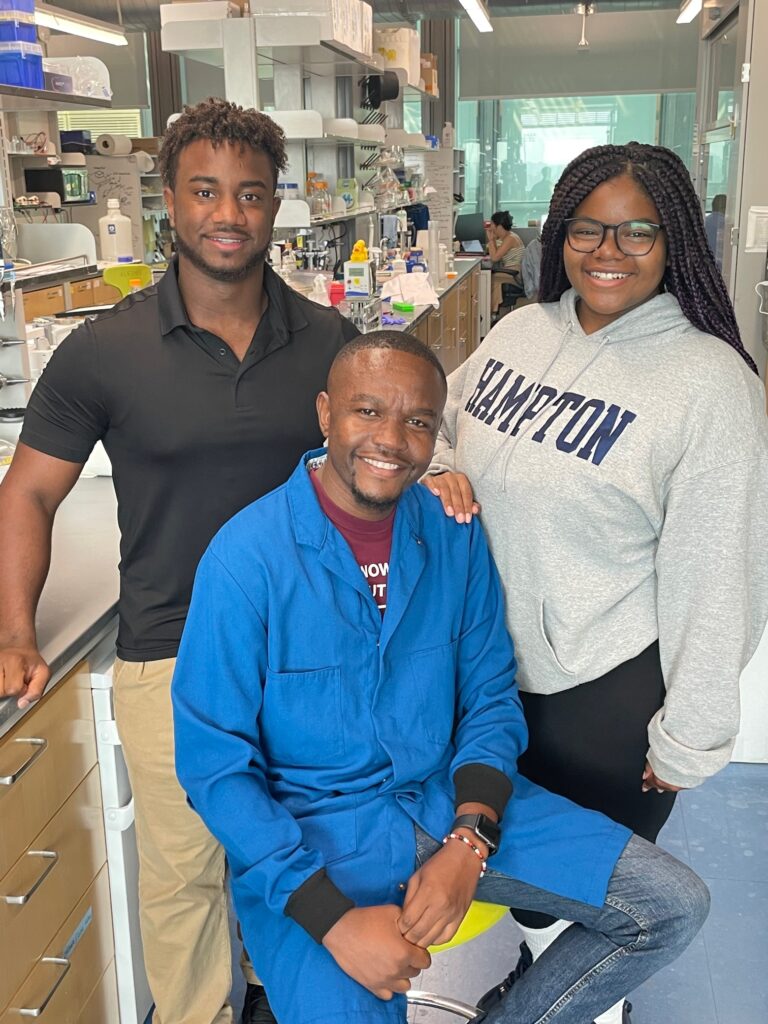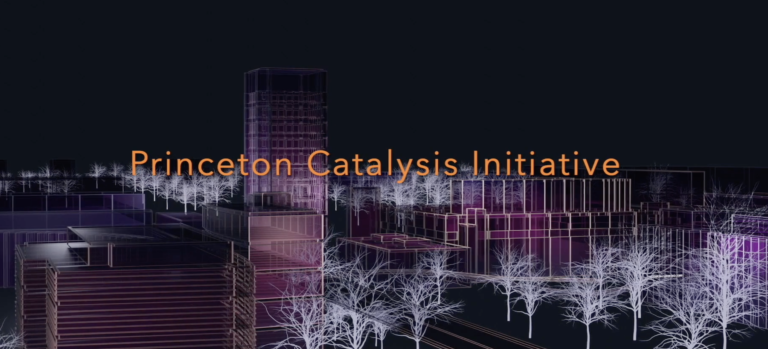

Robert Knowles
Contact:
Robert Knowles
Professor of Chemistry
[email protected]
Frick Laboratory, 360
609-258-7020
Faculty Assistant:
Nagwan I. Ali
Faculty / Grants Assistant
[email protected]
Frick Laboratory, 389
609-258-2330
Research Focus
Proton-coupled electron transfer in organic synthesis
Our group has pioneered the applications of proton-coupled electron transfer (PCET) in organic synthesis. PCETs are unconventional redox processes in which an electron and proton are exchanged together in a concerted elementary step and are widely recognized to play a central a role in biological redox catalysis and inorganic solar energy conversion technologies. We have demonstrated that PCET can serve as a general mechanism for homolytic bond activation that is both complementary to and broader in scope than conventional hydrogen atom transfer (HAT) technologies, enabling direct radical generation from numerous common organic functional groups (amides, anilides, sulfonamides, indoles, alcohols, aldehydes and ketones) and made use of the resulting free radical in subsequent bond-forming and bond-breaking reactions.
Enantioselective catalysis with free radical intermediates
PCET activation also presents unique opportunities for the development of enantioselective radical transformations. By kinetically coupling the electron transfer event to a hydrogen bonding event between the substrate and the Brønsted acid/base catalyst, PCET ensures that radical intermediates are exclusively generated as catalyst-bound adducts. We have shown that a successor hydrogen bond complexes formed after PCET between the conjugate base of a chiral phosphoric acid and the neutral radical are remarkably strong and can persist throughout the course of subsequent bond forming events, establishing a basis for asymmetric induction. These results provide a blueprint for developing a wide range of enantioselective transformations of free radicals based on direct non-covalent interactions between a chiral H-bonding catalyst and an open-shell intermediate.
Advances in catalytic olefin hydroamination
Olefin hydroaminations are important methods for the construction of aliphatic amines. We have developed a suite of photocatalytic olefin hydroamination methods that make use of nitrogen-centered radicals derived from a wide range of common N-functional groups via excited state redox events, including anilines, anilides, amides, sulfonamides, alkyl amines, and heteroaryl amines. Of particular note, we have developed four general methods for the intermolecular anti-Markovnikov hydroamination of unactivated alkenes – a long-standing challenge in homogenous catalysis.
Light driven out-of-equilibrium transformations enabled by excited-state redox events
We have recently developed strategies for achieving out-of-equilibrium synthetic transformations driven solely by excited-state redox events. These light-driven reactions, in which the reaction products formed are higher energy than the starting materials, are enabled by proceeding across two distinct potential surfaces, enabling the system to break detailed balance and produce non-Boltzmann product distributions. In this context, we have recently reported protocols for both intermolecular olefin hydroaminations and unimolecular isomerizations that proceed against a thermodynamic gradient but proceed readily and in high yield. We also developed light-driven deracemization reactions in which a racemic mixture undergoes spontaneous optical enrichment upon irradiation with visible light in the presence of a chromophore and a set of chiral catalysts. More recently we have applied these methods for C-C bond cleavage reaction of simple alcohols, with demonstrated applications in the depolymerzation of hydroxylated polymers and thermoset materials. We anticipate that the development of out-of-equilibrium methods will create a significant benefit in synthesis by enabling reaction outcomes that, by definition, cannot be achieved using conventional ground-state methods.
Honors
| • E. J. Corey Award (American Chemical Society) | 2023 |
| • Arthur C. Cope Scholar Award (American Chemical Society) | 2018 |
| • Mitsui Catalysis Science Award of Encouragement | 2018 |
| • E. Bright Wilson Prize (Harvard University, Dept. of Chemistry and Chemical Biology) | 2018 |
| • Novartis Early Career Award in Organic Chemistry | 2017 |
| • Camille Dreyfus Teacher-Scholar Award | 2017 |
| • Grammaticakis-Neumann Prize (Swiss Chemical Society) | 2017 |
| • Amgen Young Investigator Award | 2016 |
| • Eli Lilly Grantee Award | 2016 |
| • Alfred P. Sloan Foundation Research Fellow | 2014 |
Selected Publications
Photocatalytic Anti-Markovnikov Hydroamination of Alkenes with Heteroaryl Amines. Geunes, E. P.; Meinhardt, J. M.; Wu, E. J.; Knowles, R. R. J. Am. Chem. Soc. 2023, 145, 21738–21744.
Catalytic Asymmetric Hydrogen Atom Transfer: Enantioselective Hydroamination of Alkenes. Hejna, B. G.; Ganley, J. M.; Shao, H.; Tian, H.; Ellefsen, J. D.; Fastuca, N. J.; Houk, K. N.; Miller, S. J.; Knowles, R. R. J. Am. Chem. Soc. 2023, 145, 16118–16129.
Chemical Recycling of Thiol Epoxy Thermosets to Monomer via Light-Driven C-C Bond Cleavage. Nguyen, S. T.; Fries, L. J.; Cox, J. H.; Ma, Y.; Fors, B. P.; Knowles, R. R. J. Am. Chem. Soc. 2023, 145, 11151–11160.
Radicals as Exceptional Electron-Withdrawing Groups: Nucleophilic Aromatic Substitution of Halophenols via Homolysis-Enabled Electronic Activation. Shin, N. Y.; Tsui, E.; Reinhold, A.; Scholes, G. D.; Bird, M. J.; Knowles, R. R.; J. Am. Chem. Soc. 2022, 144, 21783–21790.
Noncovalent Stabilization of Radical Intermediates in the Enantioselective Hydroamination of Alkenes with Sulfonamides. Xu, E. Y.; Werth, J.; Roos, C. B.; Bendelsmith, A. J.; Sigman, M. S.; Knowles, R. R.; J. Am. Chem. Soc. 2022, 144, 18948–18958.
Contra-thermodynamic Positional Isomerization of Olefins. Zhao, K.; Knowles, R. R. J. Am. Chem. Soc. 2022, 144, 137–144.
Enantioselective Hydroamination of Alkenes with Sulfonamides Enabled by Proton-Coupled Electron Transfer. Roos, C. B.; Demaerel, J.; Graff, D.E; Knowles, R. R. J. Am. Chem. Soc. 2020, 142, 5974–5979.
A Redox Strategy for Light-Driven, Out-of-Equilibrium Isomerizations and Application to Catalytic C–C Bond Cleavage Reactions. Ota, E.; Wang, H.; Frye, N. L.; R.; Knowles, R. R. J. Am. Chem. Soc. 2019, 141, 1457–1462.
Light-driven Deracemization Enabled by Excited-State Electron Transfer. Shin, N. Y.; Ryss, J. M.; Zhang, X.; Miller, S. J.; Knowles, R. R. Science, 2019, 366, 364–369.
Anti-Markovnikov Hydroamination of Unactivated Alkenes with Primary Alkyl Amines. Miller, D. C.; Ganley, J. M.; Musacchio, A. J.; Sherwood, T. C.; Ewing, W. R.; Knowles, R. R. J. Am. Chem. Soc. 2019, 141, 16590–16594.
C-H Alkylation via Multisite Proton-Coupled Electron Transfer of an Aliphatic C-H Bond. Morton, C. M.; Zhu, Q.; Ripberger, H.; Troian-Gauthier, L; Toa, Z. S. D.; Knowles, R. R.; Alexanian, E. J. J. Am. Chem. Soc. 2019, 141, 13253–13260.
N–H Bond Formation in a Manganese(V) Nitride Yields Ammonia by Light-Driven Proton-Coupled Electron Transfer. Wang, D.; Loose, F.; Chirik, P. J.; Knowles, R. R. J. Am. Chem. Soc. 2019, 141, 4795–4799.
Rate-Driving Force Relationships in the Multisite PCET Activation of Ketones. Qui, G.; R.; Knowles, R. R. J. Am. Chem. Soc. 2019, 141, 2721-2730.
A Redox Strategy for Light-Driven, Out-of-Equilibrium Isomerizations and Application to Catalytic C–C Bond Cleavage Reactions. Ota, E.; Wang, H.; Frye, N. L.; R.; Knowles, R. R. J. Am. Chem. Soc. 2019, 141, 1457–1462.
Enantioselective Synthesis of Pyrroloindolines via Non-Covalent Stabilization of Indole Radical Cations and Applications to the Synthesis of Alkaloid Natural Products. Gentry, E. C.; Rono, L. J.; Hale, M. E.; Matsuura, R.; Knowles, R. R. J. Am. Chem. Soc. 2018, 140, 3394–3402.
Intermolecular Anti-Markovnikov Hydroamination of Unactivated Alkenes with Sulfonamides Enabled by Proton-Coupled Electron Transfer. Zhu, Q.; Graf, D. E.; Knowles, R. R. J. Am. Chem. Soc. 2018, 140, 741–747.
Catalytic Intermolecular Hydroaminations of Unactivated Olefins with Secondary Alkyl Amines. Musacchio, A. J.; Lainhart, B. C.; Zhang, X.; Naguib, S. G.; Sherwood, T. C.; Knowles, R. R. Science, 2017, 355, 727–730.
Catalytic Alkylation of Remote C-H Bonds Enabled by Proton-Coupled Electron Transfer. Choi, G. C.; Zhu, Q.; Miller, D. C.; Gu, C. J.; Knowles, R. R. Nature, 2016, 539, 268–271.
Catalytic Ring-Opening of Cyclic Alcohols Enabled by PCET Activation of Strong O-H Bonds. Yayla, H. G.; Wang, H.; Tarantino, K. T.; Orbe, H. S.; Knowles, R. R. J. Am. Chem. Soc. 2016, 138, 10794–10797.
Related News

Graduate Student Q&A: Alberto Castanedo

Knowles Named a Ross Brown Investigator


